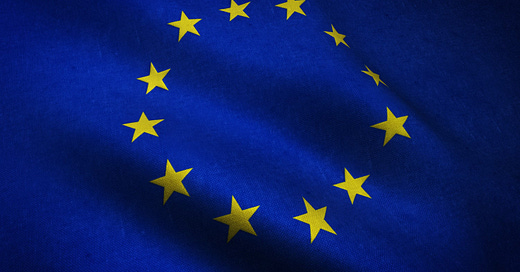29 Fun Facts about Europe
Europe is a continent where history and modernity intersect, offering a mosaic of cultures, landscapes, and traditions.
Europe is a continent of remarkable diversity, where ancient history, modern innovation, and breathtaking natural beauty all converge. From the bustling cities that pulse with life to the serene landscapes that hold tales from centuries past, Europe is a treasure trove of fascinating stories and cultural phenomena. Its countries vary widely in language, tradition, and architecture, each offering something unique to both locals and visitors alike. Whether you’re drawn to the cobbled streets of medieval towns, the vibrant art scenes of metropolitan hubs, or the quiet allure of rural villages, Europe has something that intrigues everyone. Here are some captivating facts that highlight the uniqueness and charm of this vibrant continent.
Europe is home to over 740 million people, making it the third most populous continent after Asia and Africa, and it covers only about 2% of the Earth’s surface.
Despite its relatively small size, Europe contains 44 countries, each with its own unique culture, history, and often multiple languages and dialects.
Vatican City, the smallest independent state in the world by both area and population, is located in Europe and has fewer than 1,000 residents.
Europe has more UNESCO World Heritage Sites than any other continent, with Italy and Germany topping the list of individual sites.
The European Union comprises 27 member countries that work together politically and economically, though not all European countries are EU members.
The Danube River is Europe’s second-longest river, flowing through 10 countries, making it the most international river in the world.
Mount Elbrus in the Caucasus Mountains of Russia is Europe’s highest peak, reaching an elevation of 5,642 meters above sea level.
Europe is home to the oldest continuously inhabited city in the world, Plovdiv in Bulgaria, with evidence of settlement dating back over 8,000 years.
The city of Venice, Italy, is famously built on a network of canals and requires constant maintenance to prevent it from sinking into the sea.
The Euro, the currency used by 20 of the EU’s 27 members, is the second most traded currency in the world after the U.S. dollar.
Finland is known as the Land of a Thousand Lakes, though it actually has closer to 188,000 lakes, offering scenic landscapes and outdoor activities.
Iceland has no standing army, navy, or air force and relies on defense agreements with NATO allies for its security.
Europe has more spoken languages than any other continent, with over 200 languages in active use across its diverse regions.
The Leaning Tower of Pisa in Italy was never meant to lean; the tilt began during construction due to unstable foundation soil.
Norway has the longest coastline in Europe, thanks to its intricate network of fjords that stretch across thousands of kilometers.
The Berlin Wall, which once divided East and West Berlin, stood for 28 years and became a symbol of the Cold War before it was torn down in 1989.
Switzerland’s Matterhorn is one of the most iconic mountains in the world, with its distinct pyramidal shape attracting climbers and tourists alike.
Europe’s Christmas traditions vary widely; in Catalonia, Spain, a traditional decoration called “Caga Tió” involves a log that “poops” presents for children.
The London Underground, known as the Tube, is the world’s oldest underground railway system, dating back to 1863.
Europe’s Schengen Area allows for passport-free travel across 27 countries, simplifying cross-border movement for millions of travelers.
Russia, which spans Europe and Asia, is the largest country in the world, and its European portion alone is larger than most European countries.
The Eiffel Tower in Paris was originally intended to be dismantled after 20 years, but it became a permanent landmark due to its popularity and historical significance.
Spain’s Sagrada Familia, a basilica designed by architect Antoni Gaudí, has been under construction for over a century and remains unfinished.
Europe is home to some of the most ancient universities, with the University of Bologna in Italy dating back to 1088, making it the oldest in the Western world.
Ireland has no native snakes, and a popular legend attributes this to St. Patrick, who supposedly drove all snakes from the island.
In Europe’s northern region, the Northern Lights, or aurora borealis, can often be seen, especially in Norway, Sweden, and Finland during the winter months.
Amsterdam’s canals stretch for over 100 kilometers, earning it the nickname “Venice of the North” and attracting millions of tourists each year.
Sweden offers “allemansrätten” or “freedom to roam,” a unique law that allows everyone the right to explore nature, even on private land.
Europe’s oldest parliament, the Althing in Iceland, was established in 930 AD, symbolizing a long-standing tradition of democracy.
Europe’s diverse history, cultures, and natural wonders make it a captivating destination for travelers and a continent rich in heritage. From the ancient traditions that are still celebrated today to the modern developments shaping its future, Europe has a unique blend of old and new that continues to fascinate people worldwide. Each fact here provides a glimpse into the distinct character of Europe, showcasing why it is a place of endless exploration and discovery. Whether you’re interested in historical sites, natural beauty, or cultural practices, Europe is a land of stories waiting to be uncovered.
The following sources were used to prepare this post:




